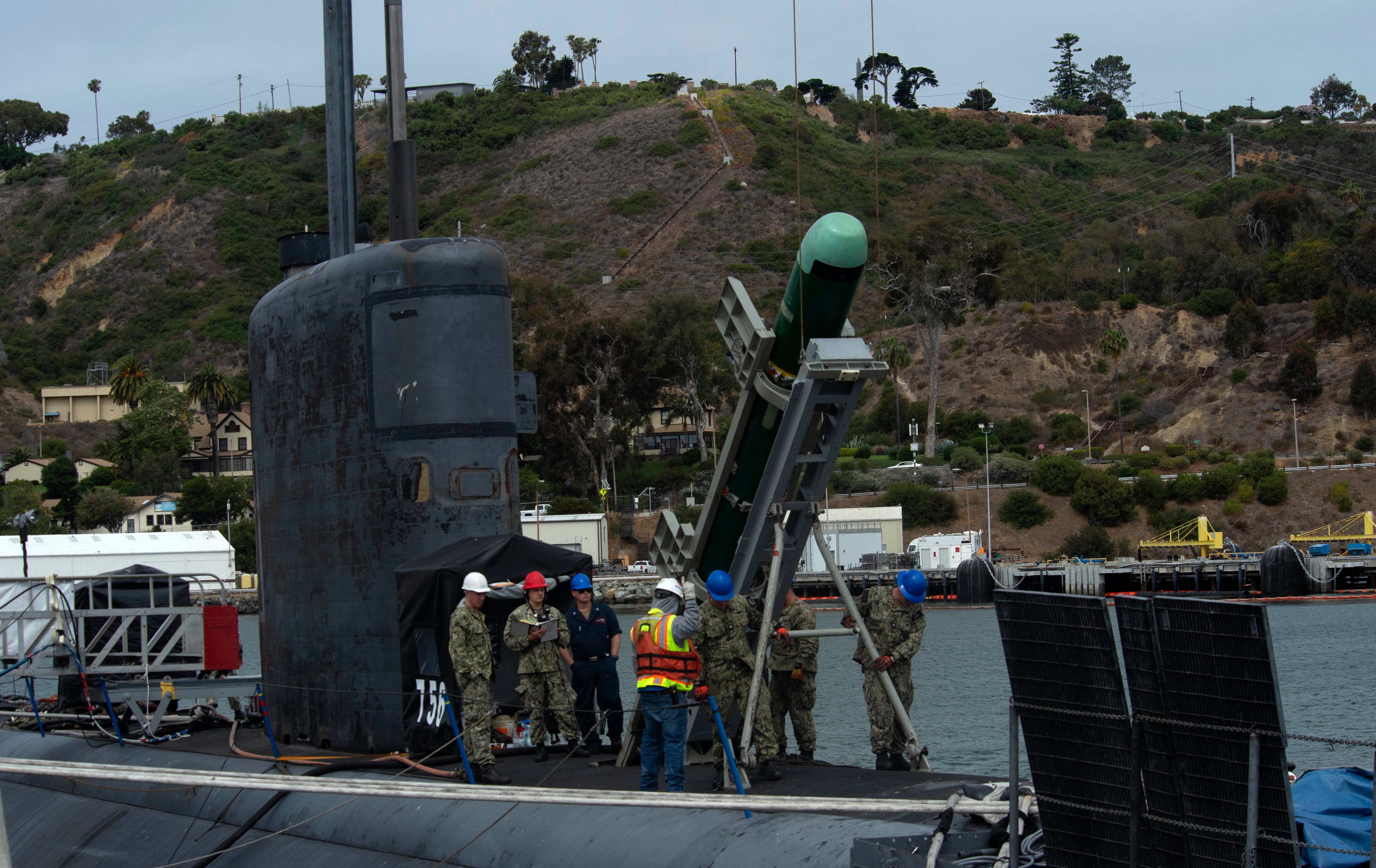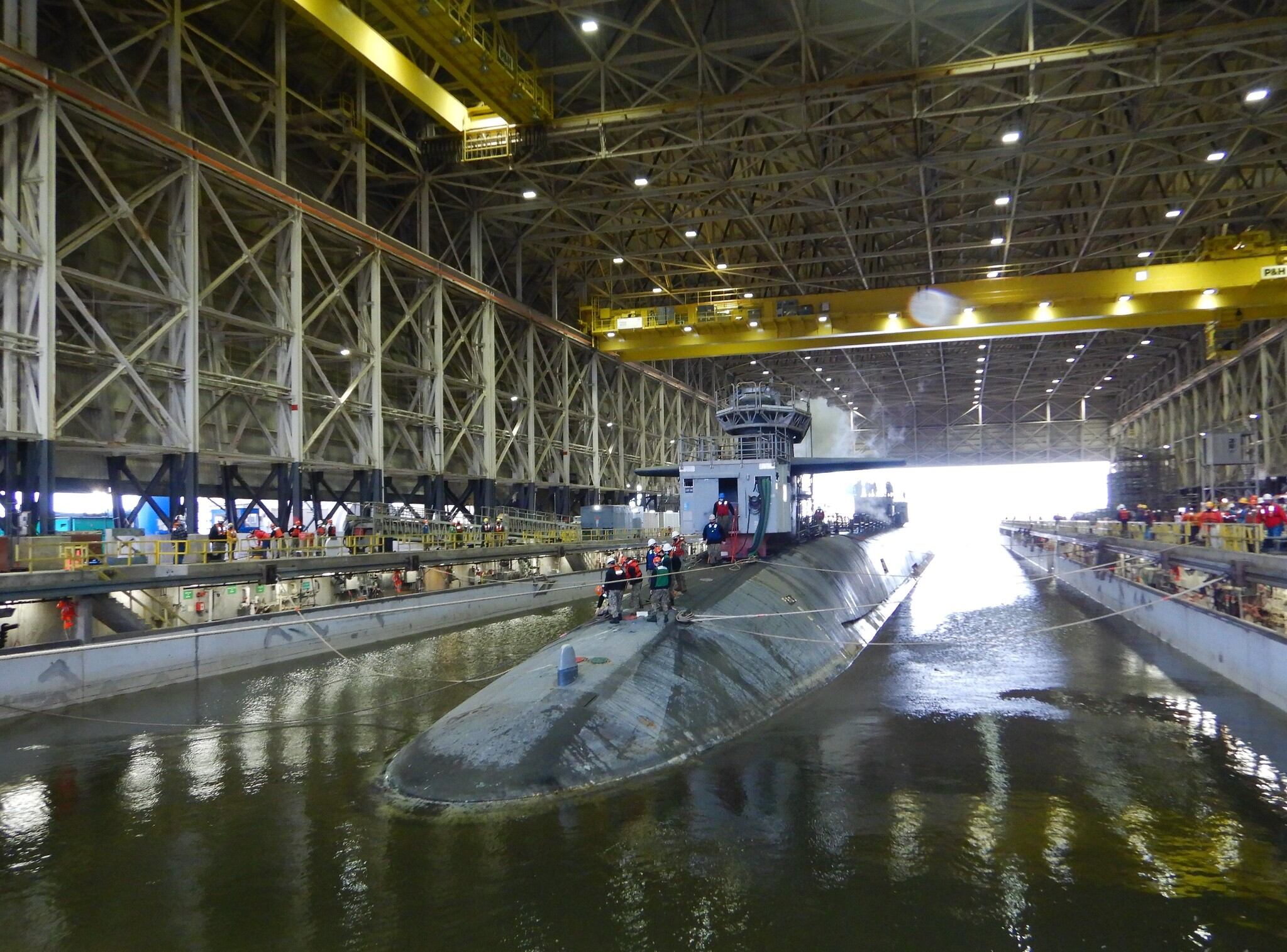ARLINGTON, Va. — The U.S. Navy has combined two undersea warfare courses that pit two platforms against each other, according to the commander of Naval Submarine Forces.
This is the first time the service has made a major change to the submarine command course in 20 years, Vice Adm. William Houston said Nov. 1 at the Naval Submarine League’s annual conference.
Even as the service considers what it wants in a future attack submarine, the undersea community is making today’s boats more lethal through high-end training and advanced weapons. Chief among the training changes is the combination of the submarine command course for attack submarines and the D5 backfit course for ballistic missile submarines,
With two attack submarines and one ballistic missile submarine now involved, “what we are finding is tactics on SSNs and SSBNs operating together that we either had forgotten about or we did not know. It is tremendously powerful,” Houston explained.
He said the ballistic missile submarine Tennessee is currently in the course with attack boats Colorado and Indiana. Tennessee received upgrades including a large vertical array sensor and the Submarine Warfare Federated Tactical System, making it “an exceptionally capable platform,” he added.
Houston later told Defense News that “our submarine command course is one of our pinnacle events; it’s where we practice tactics to go to war.”
With the inclusion of the ballistic missile subs, “we’re literally operating the best SSNs in the world against the best SSBNs, and we’re seeing who actually comes out on top,” he said.
Another at-sea event, the Black Widow exercise in the Atlantic, includes helicopters, P-8A Poseidon aircraft, surface ships and submarines working together to conduct a range of anti-submarine warfare activities.
A second exercise series, Silent Recluse, helps subs develop new tactics for going after surface ships. Houston would not go into detail about those tactics, but noted that “it’s consistent with our vision of preparing for combat in the most dangerous decade that we’re facing.”

The existing Los Angeles- and Virginia-class submarines are also receiving improved weapons.
Rear Adm. Doug Perry, the director for undersea warfare on the chief of naval operations’ staff, said at the same conference that his office is focused on increasing the quantity and the capability of heavyweight torpedoes, which is the “weapon of choice for the foreseeable future” due to its stealth and destructive capability as well as the difficulty involved in defending against them.
Mark 48 torpedo production ended in 1996. Since then, the Navy has focused on increasing the capability of its existing inventory but did not invest in buying more torpedoes to fill stockrooms. Now, Perry said, the Navy needs to do both.
The first new torpedoes are delivering this year after the production line was restarted in 2016. These new weapons have better processing power and software, and they have an improved range due to the introduction of a stored chemical energy propulsion system previously used on lightweight torpedos.
Additionally, he said, the Harpoon anti-ship missile is back on submarines after two decades, having undergone test at the 2018 Rim of the Pacific exercise.
And the Maritime Strike Tomahawk is on its way to the sub fleet; this effort adds a new seeker to the Block V Tomahawk to create a long-range anti-ship capability that’s expected to reach initial operational capability in 2025, Perry said.
And, he added, hypersonic missiles are coming to the newest Virginia-class SSNs starting in 2029.
“Across all our instruments of lethality, we’re improving readiness and capacity: We’re building our [heavyweight torpedo] inventory, improving [the torpedo] capabilities, and moving forward with a number of strike weapons that give us diversity and lethality in the battlespace,” Perry said.
For Houston, who oversees the entire submarine force, these advances are necessary to keep up with what the National Defense Strategy demands of the undersea force.
“We are a sea-denial platform. We are also one of the platforms that can get into bastion areas. We need no support; we’re an independent operator. But we can also be plugged in networkwide for the distributed maritime operations,” Houston said of the force. “I call us the apex predators of the Navy.”
Megan Eckstein is the naval warfare reporter at Defense News. She has covered military news since 2009, with a focus on U.S. Navy and Marine Corps operations, acquisition programs and budgets. She has reported from four geographic fleets and is happiest when she’s filing stories from a ship. Megan is a University of Maryland alumna.




